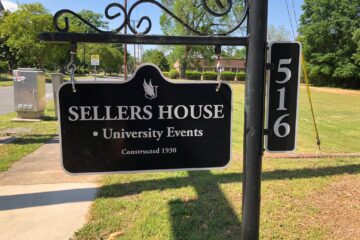James Grigg, Associate Vice President of Winthrop’s Facilities Management, speaks on the demolition of Wofford and Richardson Hall.
October 10, 2024
Facilities Management began tearing down Richardson Hall in late September, following the decimation of former student residency Wofford Hall. The removal of these twin eight-story high-rise buildings is reshaping the view of Winthrop University from Cherry Road and making way for new developments on campus.
James Grigg, Associate Vice President of Facilities Management at Winthrop, told The Johnsonian: “The demolition is going well, the overall project has taken a little longer than I had originally hoped but I am comfortable with where we are.”
The project has been fully approved by state and local government, so Grigg has encountered few issues with on-campus and off-campus reception, aside from curious onlookers.
The demolition has been saddening for some Winthrop alumni, as these buildings were the home of many important life moments and memories for former residents. Grigg said, “Alumni have been reminiscing about their time in the halls and a lot have wanted bricks as mementos.”
One of the biggest questions being asked about these former residence halls is what will take their place. Grigg listed the following options which stem from the university’s Campus Master Plan: “One is a new residence hall on the Richardson site, likely a [first] year experience hall. Then a possibly new academic building on the Wofford site.” Nothing is set in stone yet, though, as Grigg expressed that the university essentially has “two building pads [and] we can decide what we want to build on them,” presumably once the demolition is further toward completion.
A second issue that complicates future plans is the possible construction of a road “realigning Alumni Drive so it would not go all the way to Cherry Road by the railroad tracks but be realigned to meet Cherry Road at the Camden Avenue light,” Grigg said. This would be highly invasive on local roads and traffic patterns and require further approval from the city. Facilities is “currently studying this with a roadway engineering firm and reviewing the concept design with the city and South Carolina Department of Transportation.”
Health and safety concerns must be considered when managing a successful demolition as well. When asked about the possible effects of asbestos (which was used in the construction of the residence halls) polluting the air, Grigg said, “To comply with federal and state regulations, we have had all the building material tested and then [had] any regulated material abated prior to demolition,” including asbestos.
Still, this expansive project creates a good deal of air pollution and debris, especially for those working on or walking near the site.
Onlookers may have also noticed a crane hosing water at the buildings during active demolition, which Grigg said is being used to “limit the dust produced by the demolition work.” Facilities also seeks to maintain the safety of the community by preventing entrance onto the site. “The site is fenced off and off-limits due to the dangerous activities taking place with large construction equipment moving around.”
Regarding the timing of the project, Grigg explained that the demolition of Richardson Hall is expected to take five to six weeks. Following this, Facilities will “have to remove the foundations and wrap up some utility work.” Altogether, the project is expected to be complete by early 2025.




